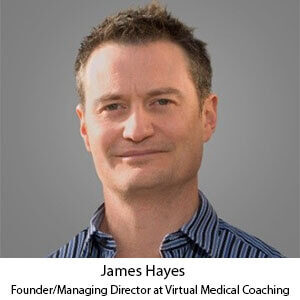 Data analytics plays a crucial role in higher education, allowing colleges and universities to streamline their academic operations, increase efficiency, and make informed/quick decisions to achieve a competitive advantage in the education sector.
Data analytics plays a crucial role in higher education, allowing colleges and universities to streamline their academic operations, increase efficiency, and make informed/quick decisions to achieve a competitive advantage in the education sector.
The purpose of advanced data analytics tools coupled with artificial intelligence (AI) and machine learning algorithms is to analyze and act upon data and generate valuable insights promptly.
Improving healthcare education requires creating competent health professionals who can meet the rising demands in the medical sector. Research shows that analytics in higher education can enhance decision-making based on real-time data and trends derived from students’ resource usage and behavioral patterns.
In addition, data analytics can help forester institutional growth and boost productivity by allowing organizations to create innovative models to overcome data-related challenges. Let us discuss the role of data analytics in medical education. Read on!
Medical & Allied Health Students’ Assessment Data
A single teacher in a classroom setting teaches different students simultaneously. A small percentage of students understand all of the concepts, while most do not excel according to the teacher’s expectations.
Assessment data can help healthcare instructors to determine learners’ understanding of crucial concepts and modify their teaching methodologies or strategies to increase efficiency.
Previously, medical and allied health instructors would not use real-time assessment techniques. However, the advancement of big data analytics has made it possible for these instructors/teachers to understand students’ requirements in real time by collecting volumes of data and analyzing them via innovative tools. The data collected and analyzed is usually about the students’ performance.
Instructor’s Performance Evaluation
Generally, teachers determine students’ grades using a manually established system. Similarly, medical and allied health institutions have employed various evaluation techniques to examine and analyze instructors’ effectiveness. However, most of these techniques are manual, inefficient, and time-consuming to generate insights.
Collecting students’ feedback, reading the information, analyzing data, and developing an analogy are daunting for medical and allied health institutions, especially when using manual systems. Thanks to data science and analytics, it has become easier than ever to monitor and evaluate teachers’ performance using historical and real-time data.
Real-time monitoring of instructors via data collected and analyzed is a breakthrough in healthcare education. With analytics, institutions can store, access, and handle unstructured data.
For example, students’ feedback or reviews about instructors evaluated using analytics tools can generate valuable insights, allowing medical colleges and universities to modify their strategies and implement innovative teaching methods.
Administrative Decision-Making
Big data analytics in medical and allied health education has excellent potential for promoting administrative decision-making and organizational resource allocation. Analytical tools based on data models, AI, and machine learning are valuable for identifying at-risk medical students and implementing interventions to mitigate risks.
A study published by Education Resources Information Center (ERIC) highlights that data analytics can help institutions develop effective instructional techniques and transform the traditional curriculum into more intuitive, evidence-based, data-driven, and immersive.
Collecting educational data from learning management systems, learning activities, curriculum, and social networks, and analyzing it through analytics can help develop better curriculum strategies, allowing teachers and students to collaborate and improve learning processes.
Remember, decision-making is an essential component of medical and allied health institutions’ activities and helps streamline the planning process. When institutions plan based on real-time data and insights, they decide on educational strategies and goals their organization can pursue. At the same time, institutions use real-time and accurate insights to allocate resources and determine who will perform specific tasks.
Streamlined Medical Curriculum
Data analytics is a powerful tool to identify data connections and relations, including the overall picture of a medical program and specific courses. The purpose is to determine whether students’ knowledge, skills, and attitude align with teaching methodologies.
Therefore, medical and allied health colleges can use data analytics to identify specific patterns by collecting feedback from students and teachers. That way, institutions can take essential steps toward restructuring the medical and allied health curriculum and improving students’ learning outcomes.
Moreover, a study published on NCBI states that data analytics allows for performing gap analysis in curriculum development or enhancement processes. It enables institutions to identify potential discrepancies and ensure the curriculum’s alignment with students’ outcomes at different levels. So, using data analytics and related tools can help healthcare institutions determine:
- The complexity of conceptual and actual curriculum structure
- Large-size documents, worksheets, and data related to curriculum development
- Accessing curriculum from various sources and different forms
- The heterogeneity of curriculum data.
Final Words
Data analytics in medical and allied health education create new opportunities for institutions to enhance the overall education process by helping instructors and students make intelligent decisions at earlier stages. Big data, AI, machine learning, VR/AR, and analytics incorporated in medical education offer unprecedented opportunities for institutions to improve learners’ outcomes.

















